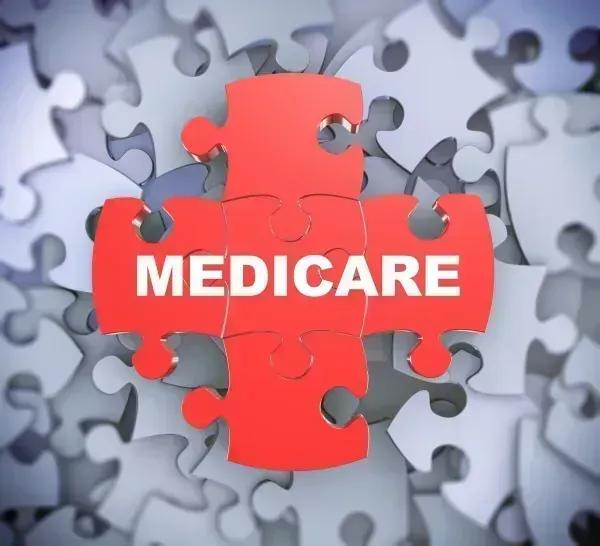Part B Insider (Multispecialty) Coding Alert
WPS Medicare Identifies This Major Coding Problem Among ENTs

Hint: Don’t skimp on documentation.
Most coding experts have heard the old adage, “If it wasn’t documented, it wasn’t done.” But some ENTs may have forgotten this famous mantra, and one payer is watching.
WPS Medicare, which provides Part B coverage in Michigan and Indiana, recently revealed the results of its Comprehensive Error Rate Test (CERT), and found that 100 percent of the problems discovered among otolaryngology claims involved insufficient documentation.
For instance: WPS noted that an otolaryngologist administered immunotherapy injections and reported 95117 (Professional services for allergen immunotherapy not including provision of allergenic extracts; 2 or more injections), but the documentation was missing signed notations of oversight, progress notes of re-evaluation to determine the treatment’s effectiveness (which continued for two years), an attestation of the physician progress notes, and a record of who administered the injection. In addition, the notes that the practice submitted had an illegible signature on them, rendering them useless.
In reality, any allergen immunotherapy must include the following, WPS says in the CERT results:
Although WPS called out allergy injections as an example, those procedures don’t represent the only documentation errors that ENTs make. To ensure that your documentation would satisfy an auditor’s keen eye, keep the following tips in mind when you create your medical records.
Tip 1: Find A Way to Make Notes Legible
If your otolaryngologist can’t maintain legible documentation, then your records won’t hold up under audit, and could even be compromising the integrity of your code choices. After all, if your coder can’t read the records, he or she can’t select the most appropriate code. If the doctor has messy handwriting, you may want to suggest that he print, use dictation, use forms or invest in an Electronic Health Record (EHR) system to ensure legibility.
You certainly don’t want to have to reimburse any money because an auditor can’t read your doctor’s handwriting, and CMS clearly states that this can happen. “When determining the medical necessity of an item or service billed, Medicare’s review contractors must rely on the medical documentation submitted by the provider in support of a given claim,” CMS says in MLN Matters article SE1237. “Therefore, legibility of clinical notes and other supporting documentation is critical to avoid Medicare FFS claim payment denials.”
If an auditor is on the way and you know he won’t be able to read your notes, there are things you can do instead of panicking. “If a provider feels that his/her notes may not be legible, he/she may translate these notes prior to submitting them to Palmetto GBA for review,” says Part B MAC Palmetto GBA. “The note must be translated verbatim and signed by the provider. Both documents must be submitted.” In other words, you should submit your original documentation and the transcribed version to any auditor who requests the records.
Tip 2: Don’t Get Creative With Abbreviations
Your otolaryngologist may refer to a foreign body as an “FB,” but the coder might know “FB” as “fasting bloodwork.” Confusing acronyms and abbreviations can create issues for billing staff members as well as auditors. That’s why you should only use common abbreviations that are universally known.
You can also maintain a glossary of your abbreviations as part of your compliance program. Make sure you include the abbreviation glossary when you submit the notes to the auditor. Should you have provider signatures and initials that may not be legible, it is also recommended to maintain a register of each provider’s official signature and initials next to their typed name. Include a copy of this register with any audit requests.
Anthem Medical’s Medical Record Documentation and Coding Tips policy states, “Use only standard abbreviations, avoid the use of abbreviations in medical record documentation, and do not create your own abbreviations.”
So if your doctors are accustomed to using terms like “HL AS,” you may want to remind them to expand it out to “hearing loss, left ear” to meet your carrier’s guidelines.
Tip 3: Look for Two Signatures When Scribes Are Involved
A scribe is a person who accompanies the doctor on each patient encounter. The scribe writes or transcribes the doctor’s dictation into the medical record, helping to expedite documentation.
While it helps if the scribe has knowledge of medical terminology and a familiarity with typical encounters, procedures and commonly used medications, there are no set training or qualification requirements since scribes basically function as a human tape recorder. The scribe should not independently document anything other than perhaps the review of systems and past medical, family, and social history, which Medicare documentation guidelines allow to be recorded by ancillary staff members.
When your doctor uses a scribe, ensure that you meet the signature requirements. Noridian Medicare says in its Documentation Guidelines for Medicare Services, “If the physician uses a scribe (an individual taking notes), the scribe needs to fully sign the note, with their own credentials, followed by the physician’s signature and credentials.”
Related Articles
Part B Insider (Multispecialty) Coding Alert
- Part B Payment:
Documentation Must Be Clear and Complete to Ensure Chiropractic Claims Are Accepted
With chiropractic claims, it is wise to consult your MAC on documentation requirements. Documentation—it is [...] - Part B Revenue Booster:
Help, Hype, or Hindrance: Social Media Can Be the Key to Revenue Rewards
Ramp up your social media presence with this cyber advice. Due to the onset of [...] - Clip And Save:
Get A Grip on MAC Vernacular to Avoid Denials
Know these top acronyms commonly found in MAC coding and provider resources. CMS utilizes Medicare [...] - WPS Medicare Identifies This Major Coding Problem Among ENTs
Hint: Don’t skimp on documentation. Most coding experts have heard the old adage, “If it [...] - Physician Notes:
CDC and FL Health Offer New Advice for Providers As Zika Hits First US Citizens
Plus: New MPPR rulings for PC will affect payment for some diagnostic imaging care. At [...]



